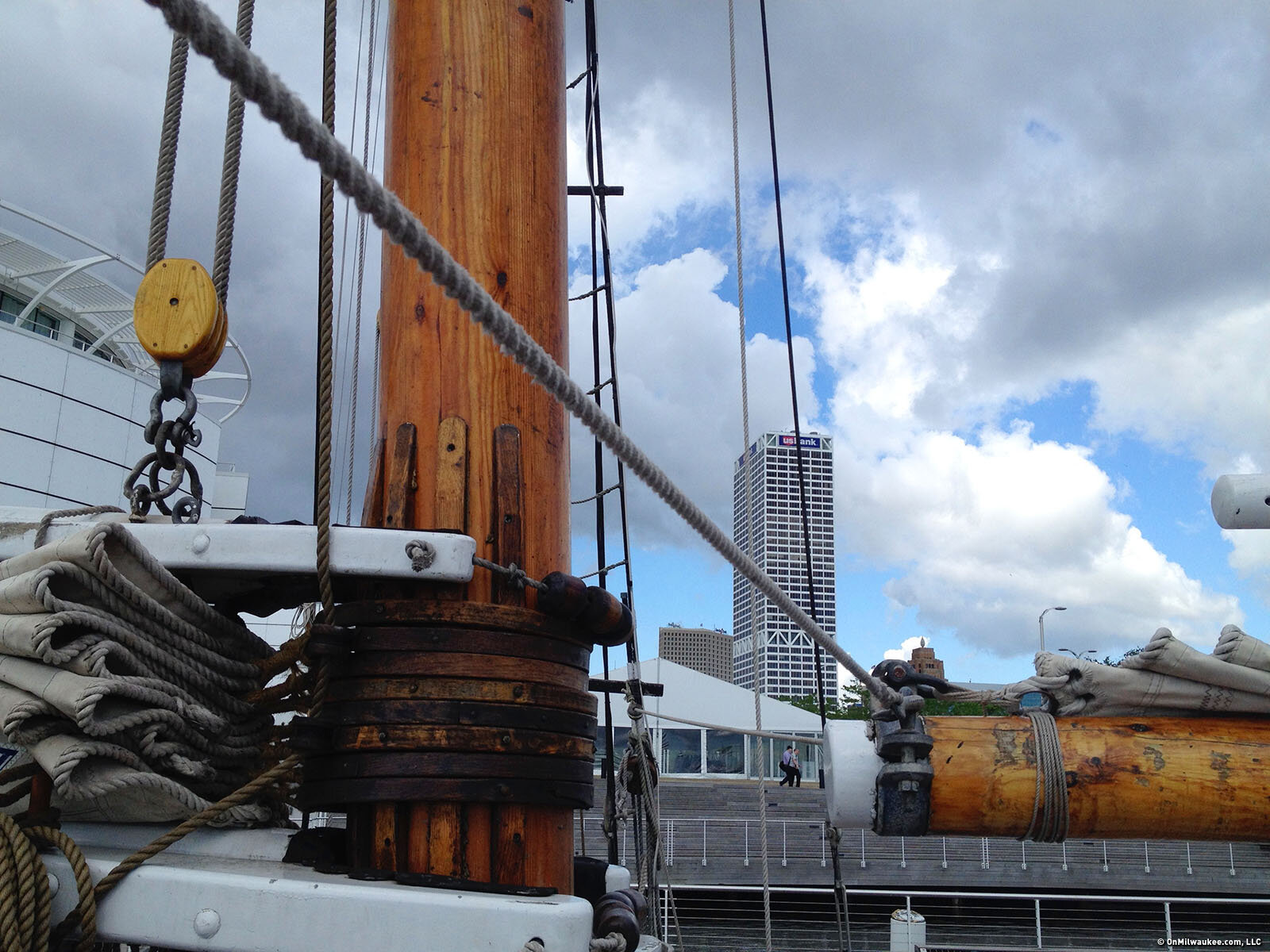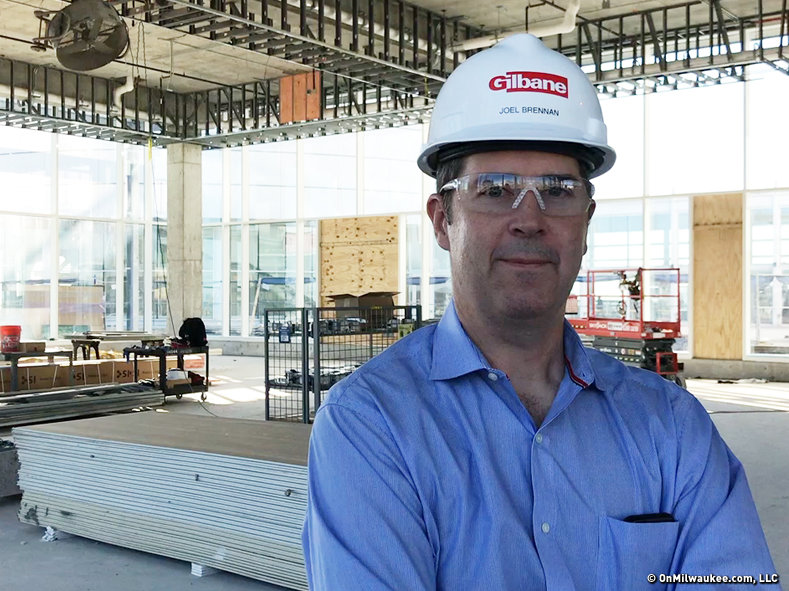If you thought Discovery World was a place for kids -- like I did -- it’s time to give the lakefront institution another look.
With a rapid prototyping center, a video/TV production studio, an audio studio, a printing and publishing lab, a biology lab, salt and fresh water aquariums, maritime exhibits and more, Discovery World isn’t necessarily the place to bring junior after a visit to Betty Brinn across the street.
“The idea of this being a science museum is kind of a past concept,” says Executive Director Paul Krajniak. “Since it’s all white and placed to connect you with the real discovery world -- the one out there,” he says gesturing out across the lake, “it’s not really a museum.
“So what do you call this place?,” he asks, turning to Ross Lowinske, Discovery World’s new marketing director, searching for answer.
“It’s a center for imagination, a center for creativity,” chimes Lowinske.
Although Discovery World has set its sights on the 17- through 27-year-old crowd, it is clearly a place for everyone. Younger kids might not grasp the big concepts or completely process all the applications, but the big boats -- the recreated Challenge schooner inside and the seaworthy Denis Sullivan floating outside -- will make them ooh and the colorful fish, sea horses and rays in the aquarium will make them aah. And along the way, they’re sure to learn a little something.
An educational component has always been key at Discovery World, Krajniak says, but that means teaching in a way that most schools still don’t.
“We have spent a lot of time teaching children. So much emphasis was placed on science illiteracy that we put a lot of energy there and what we found out was that if you only taught science in isolation, all students would plateau. Even the good students, there would be only 10 percent of them that would be interested.
“But if I taught a person that was interested in writing, science through that aspect, if I taught it through art, if I taught it through things that people were interested in generally, then all of a sudden the grades went up and the interest level went way up. And it seems so common sense.”
And so, when the Milwaukee Public Museum expressed interest in obtaining Discovery World’s adjacent space, Krajniak and his staff had the opportunity to think big. Or should we say, re-think big?
The result is not only a stunningly sited building that straddles the lake and land, but sits adjacent to the Milwaukee Art Museum and across from Betty Brinn, creating what Krajniak calls a “continuum of innovative people.”
Discovery World has expanded into a bigger home and into a world of podcasting classes and Great Lakes science and history -- and now it woos the martini set – but the mission really hasn’t changed much since opening in 1982.
“I think that in the early days it was more of an interactive science and technology museum but it always had this economics and entrepreneurship aspect which gave us the key to making things more about how you make things happen rather than looking at what other people did,” Krajniak says.
That concept is aflame as you walk through the 120,000-sq. ft., nearly $64 million building. It is a haven for hands-on philosophy. There are some “exhibits” in the traditional sense, sure. But look around and you’ll see that visitors gravitate toward getting their hands dirty, so to speak.
Upstairs, there’s a big group of seniors exploring the deck of the Challenge. In the bi-level technology exhibits, kids are transfixed by working models of MAM’s Quadracci Pavilion and Miller Park as well as by the Dream Machine, which allows visitors to bring their ideas to life via prototyping technology.
And the studios and labs -- which are used for classes for kids, adults, school groups and families -- are proving to be very popular.
“You want to be part of the DIY movement?” asks Krajniak, “We have nine studios and labs here. If you want to learn how to write or be a journalist and put out your own ‘zine or build your own Web site, those tools are here. If you want to understand water chemistry and actually be trained by somebody who is (an) expert, that’s here, too. So, it’s really an educational engine. It’s a university in flight.”
The Discovery World staff keeps an eye out to see what works, Krajniak says, and the place is constantly morphing.
“(It is) always meant to change and that’s one of the most difficult things that we have to communicate, besides the fact that we’re for adults, is that we’re about change. We’re about process. So this place will never stop changing. The idea (is) that an exhibit, you’ll always see it in process. As soon as it becomes done, it becomes the past. And then we need to change it out.”
Discovery World is spinning so many plates simultaneously that it’s hard to imagine that change is anything but inevitable.
Collaborations with Milwaukee Public Television and the new Lakeshore State Park are on tap. Milwaukee-area high school students are constantly being rotated down to the Caribbean to work and learn about the Denis Sullivan. Classes are cycling non-stop in the labs and studios. The stunning Pilot House room -- with its 360-degree view of Downtown Milwaukee and Lake Michigan -- and a pair of digital theaters are hosting events.
Frankly, after exploring the museum in detail, I still feel like I’ve only scratched the surface.
Born in Brooklyn, N.Y., where he lived until he was 17, Bobby received his BA-Mass Communications from UWM in 1989 and has lived in Walker's Point, Bay View, Enderis Park, South Milwaukee and on the East Side.
He has published three non-fiction books in Italy – including one about an event in Milwaukee history, which was published in the U.S. in autumn 2010. Four more books, all about Milwaukee, have been published by The History Press.
With his most recent band, The Yell Leaders, Bobby released four LPs and had a songs featured in episodes of TV's "Party of Five" and "Dawson's Creek," and films in Japan, South America and the U.S. The Yell Leaders were named the best unsigned band in their region by VH-1 as part of its Rock Across America 1998 Tour. Most recently, the band contributed tracks to a UK vinyl/CD tribute to the Redskins and collaborated on a track with Italian novelist Enrico Remmert.
He's produced three installments of the "OMCD" series of local music compilations for OnMilwaukee.com and in 2007 produced a CD of Italian music and poetry.
In 2005, he was awarded the City of Asti's (Italy) Journalism Prize for his work focusing on that area. He has also won awards from the Milwaukee Press Club.
He has be heard on 88Nine Radio Milwaukee talking about his "Urban Spelunking" series of stories, in that station's most popular podcast.







